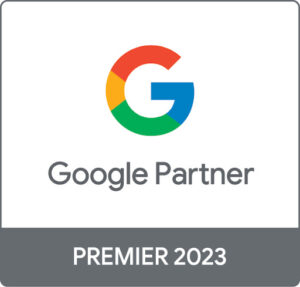For many bloggers, the ever-changing demands of Google are difficult to keep up with. Time, budget and lack of insight can all hinder your chances of pleasing the Google overlords and getting your site up the rankings – particularly in a highly competitive market.
Companies are tripping over themselves to write content guides for businesses, which may have the time and spend to get going straight away, but often overlook our blogger friends who treat us so well in our outreach and influencer efforts.
When the Seed team met with bloggers this year during an SEO workshop, confusion over how to rank on Google was a recurrent theme. So, bloggers, this one is for you: a Google-friendly SEO copywriting guide to help you produce great content quickly and effectively.
What Google looks for in ‘great content’
I think we all have a love/hate relationship with Google. We love the traffic but hate how competitive the platform has become without a big budget and a devoted team on your side.
If you’re a blogger reading this, the good news is that there are plenty of avenues that you can rely on for exposure and revenue that businesses have to shoehorn their way into – blogger communities on social is a big example. Unfortunately, we all need Google for that extra traffic and exposure.
There is plenty of method behind our SEO madness. By learning to please Google, we all get into the habit of creating SEO optimised content. This in turn cranks up domain rating scores which advertisers and other bloggers use to determine whether a site is worth a collaboration and ultimately prestige and dollar are earned.
To understand great SEO copywriting, you must learn the ways of the Google bot
Think of Google as a tyrannical little bug scuttling around your site. Your service, product and blog pages, and internal and external links act as navigation tunnels.
As it’s scuttling through, its objectives are trying to figure out:
- What you’re about
- What you have to offer
- Whether your site is popular – if others are linking to your site
- Whether you’ve made your site easy to navigate
If the tunnels are confusing, don’t lead anywhere (a 404 page for example) or your site isn’t validated by others, Google is not going to give your site the domain rating you need to rise up the ranks and create an attractive site for advertising and other bloggers.
Always remember the main aim of Google: to help people. ‘Is this useful and relevant?’ should be your first question when you’re SEO copywriting, setting up a blogger collaboration, adding site features like drop-down menus and so on.
Good news: there’s probably plenty of things that you’re already doing that Google loves:
- Organic keywords – if you’re a blogger with a clear niche – ethical beauty, console gaming, etc. – your site is probably filled with rich, relevant keywords that Google loves.
- Picking up engagement – If you’re remarketing your content and it’s gaining fresh comments, Google will think that you’re updating your content and will keep you in the top of rankings. If you’ve ever seen a newspaper article from 3 years ago and it’s still at the top of Google, it’s probably because people are still commenting on the piece.
- Visual content – visual sites rank well on Google. If you can say something with an image, try it! Visual content is notoriously sharable, which is a handy factor for your domain authority.
- Local content – Google has started to favour local results in recent years. If you’re writing local reviews and guides. you’re probably building up good local SEO links in the process. If not, go out into your community, team up with local bloggers, write local reviews and create guides.
- Your site has a clear focus – Google loves pages which talk about a specific topic and follow a nice H1 to H3-4 structure. If you’re a beauty blogger, you’re probably writing about a single topic per blog rather than throwing in a bunch of subjects and hoping for the best.
Room for improvement: here’s what you should be doing:
- Answering questions – As I highlighted above, the main aim for Google is to display content that is relevant for a search term. As such, Google loves SEO copywriting which answers questions and solves problems. Top tip: answer more questions! Use Google planner to discover the most popular keywords, transfer them into a tool like Answerthepublic to find out what questions people are searching for around that term and bing: you’ve got an angle for your next blog.
- Mobile optimisation – mobile traffic has become very important for Google. By 2017, we were spending 69% of our media time on smartphones. If your site is slow or unresponsive for mobile, Google is going to put your site into the ‘not that useful’ pile. The good news is that most WordPress templates are optimised for Google – all ticked boxes for SEO.
- Social sharing features – As we mention above, Google looks for engagement signals – comments, social shares – to determine your domain ranking. Make the customer journey from blog to social quick and simple with social sharing plugins on your blog – popular free plugins include Kiwi, Tweet Dis and Social Locker.
Also…
- Use internal anchor links with primary keywords
- Keep your URL short, descriptive and user-friendly
- Focus on a user-generated content strategy to increase comments and reviews on your site
- Ensure the majority of your backlinks are from relevant websites
- Use keywords within page titles
- Use your keyword variants within H2, H3 and H4 headings & subheadings
Stay tuned…
All this sounds like a lot of time – and I feel like I haven’t even scratched the surface of what Google likes when it comes to SEO copywriting. Find out how you can produce high-performing content in a fraction of the time in our repurposing guide.








